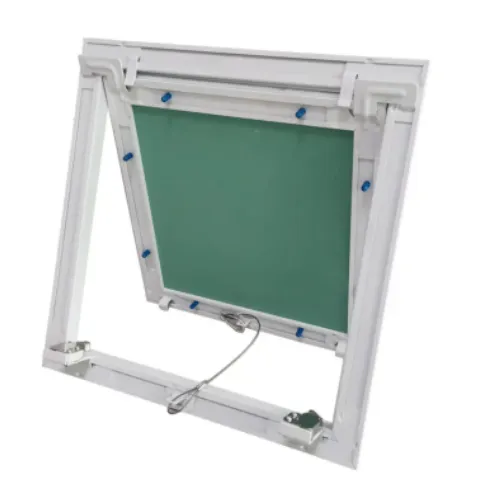- Afrikaans
- Albanian
- Amharic
- Arabic
- Armenian
- Azerbaijani
- Basque
- Belarusian
- Bengali
- Bosnian
- Bulgarian
- Catalan
- Cebuano
- Corsican
- Croatian
- Czech
- Danish
- Dutch
- English
- Esperanto
- Estonian
- French
- German
- Greek
- Hindi
- Indonesian
- irish
- Italian
- Japanese
- Korean
- Lao
- Malay
- Myanmar
- Norwegian
- Norwegian
- Polish
- Portuguese
- Romanian
- Russian
- Serbian
- Spanish
- Swedish
- Thai
- Turkish
- Ukrainian
- Uzbek
- Vietnamese
Aza . 19, 2024 14:02 Back to list
Understanding the Materials Used in Ceiling Grid Construction and Design
Understanding What Ceiling Grids Are Made Of
Ceiling grids are a critical component in modern architecture and interior design, serving both functional and aesthetic purposes in various indoor environments, from offices and schools to retail spaces and residential homes. These grids create a framework for suspended ceilings, allowing for easy installation and maintenance of ceiling tiles, lights, and other utilities. Understanding what materials ceiling grids are made of can provide insight into their design, durability, and overall effectiveness in a building's interior.
The most common material used for ceiling grids is metal, particularly galvanized steel or aluminum. Metal grids are favored for their strength and durability, allowing them to support heavier ceiling tiles and fixtures without sagging or bending over time. Galvanized steel is often coated to prevent rust, making it suitable for spaces that may experience high humidity or temperature fluctuations. Aluminum grids, on the other hand, are lighter and resistant to corrosion, which makes them an excellent choice for any environment.
Understanding What Ceiling Grids Are Made Of
Wood is also used in some ceiling grid systems, particularly in high-end residential or commercial spaces where a warm, natural appearance is desired. Wooden grids can create a unique ambiance but typically require more maintenance than their metal or plastic counterparts. They are more susceptible to warping and damage in humid environments, so they need to be treated properly to maintain their integrity over time.
what is ceiling grid made of

Moreover, some ceiling grid systems incorporate fiberboard or mineral fiber as part of their structure. These materials are particularly useful for achieving acoustic control, as they can absorb sound and reduce noise levels in busy environments. Mineral fiber tiles are also designed to be fire-resistant, making them a safer option for many building codes. The combination of metal grids with mineral fiber tiles creates an efficient solution for both sound and fire safety in commercial spaces.
In addition to the primary materials used for the grids themselves, various accessories and elements contribute to the overall functionality of a ceiling grid system. These include suspension wires, which hold the grid in place and determine its height; corner pieces and cross tees that allow for various grid configurations; and hardware for the installation of lights, air vents, and additional ceiling fixtures.
When choosing a ceiling grid system, designers and builders must consider several factors, including the intended use of the space, acoustic requirements, moisture levels, and aesthetic preferences. In broader commercial spaces, a more robust metal grid might be preferred for its strength and fire resistance, while a more decorative PVC grid might suit a boutique retail environment.
Moreover, sustainability is an increasingly important aspect of construction and design. Many manufacturers are now producing grid systems that use recycled materials or are designed to be more energy-efficient. This shift not only helps reduce the environmental impact but also aligns with the growing demand for green building practices in the industry.
In summary, ceiling grids are primarily made from metal, PVC, or wood, each offering distinct benefits tailored to different environments. Whether for superior support, aesthetic appeal, or acoustic control, understanding the materials that make up ceiling grids can significantly influence design choices and project outcomes. As technology and materials continue to evolve, options for ceiling grids will likely expand, providing even more solutions for dynamic and aesthetically pleasing interior spaces.
-
Transform Interiors with PVC Gypsum Ceiling: A Stylish, Durable, and Moisture-Resistant SolutionNewsMay.19,2025
-
The Smart Interior Upgrade: Discover the Durability and Versatility of Gypsum Ceiling Access Panel SolutionsNewsMay.19,2025
-
The Smart Choice for Interior Design: Discover the Value of PVC Gypsum Ceiling SolutionsNewsMay.19,2025
-
Mineral Fiber Ceiling Tiles: The Smart Blend of Performance and AestheticsNewsMay.19,2025
-
Mineral Fiber Ceiling Tiles: The Superior Choice Over Gypsum for Sound and Fire SafetyNewsMay.19,2025
-
Mineral Fiber Ceiling Tiles: Eco-Friendly Strength and Style for Every CeilingNewsMay.19,2025







